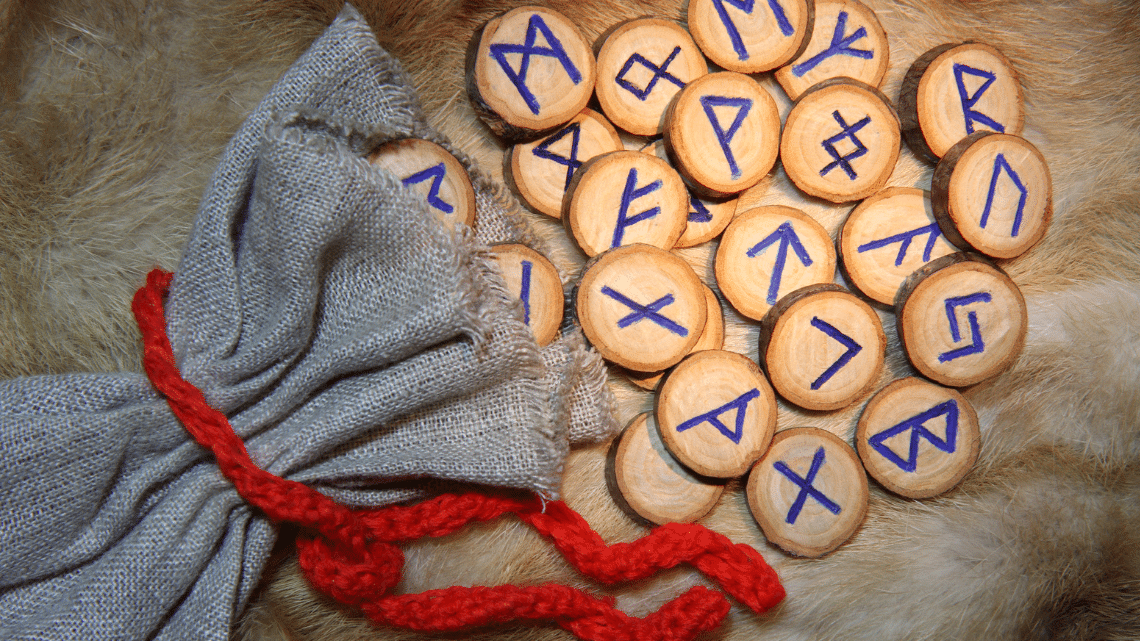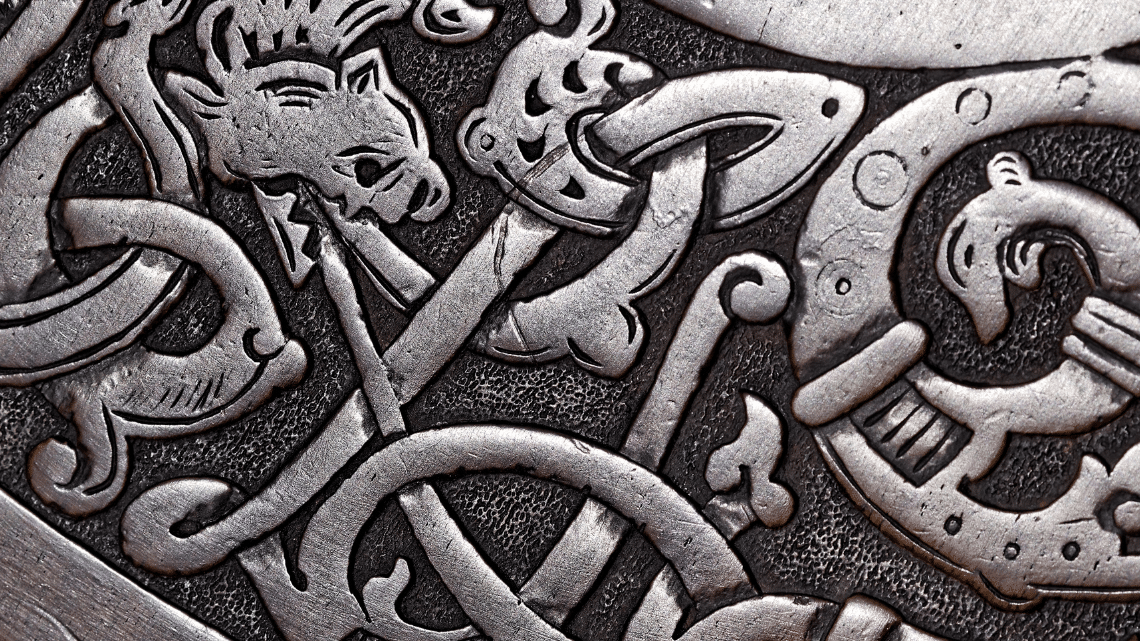The Viking culture was soaked in mythology, with their vast repertoire of gods and goddesses being an integral part of the belief system. In the intricate Norse culture, runes have emerged as enigmatic yet powerful symbols that have woven through the fabric of history. Runes seemed to touch upon various aspects of life, thus serving more than just letters engraved onto wood or stone. So, let’s check out their significance, meaning and how they helped shape Norse culture and mythology.

Origins and Linguistic Evolution of Runes
Prominent linguists have traced back the runic alphabet used by the Vikings to the early Italian alphabets. The very first known Germanic runes were already widespread in the first century CE.
As for Scandinavia, the runic alphabet dates back to 400 CE. Nevertheless, it was later discovered that the full set of 24 runes that are inscribed onto the Kylver stone in Gotland, Sweden date back to the early 5th century.
By 800 CE, the runic alphabet had already been modified to accommodate the Nordic languages, and a new 16-symbol alphabet called Younger Futhark had been put forward.
However, fast-forward to 1,200 BC, Christianity spread across the continent, which signified the beginning of the end for the runes. They were slowly displaced by the Latin alphabet, but their significance is felt even nowadays.

The Importance of Runes in Norse Civilisation
Long before the advent of the Latin alphabet, runes emerged as the main script of the North Germanic people. They came as characters and were commonly known as the runic alphabet. Each rune held deep symbolic significance, representing various elements of the natural world, cosmic forces, and the entire human existence.
Looking beyond their function as a writing system, runes plummeted into the realm of divination and prophecy. Both seers and shamans of the tame used runes as tools for reading the will of the gods and unravelling people’s fates.
Rituals of drawing dunes helped prophets to gain insights into matters of importance – regardless of whether it was war, harvest, or any personal destiny. All the patterns that runes formed were observed with high esteem, as they were seen as the key to unravelling hidden matters of existence.
Runes even touched upon the magic sphere. Through spells of binding and enchantment, runic magic was used to unravel several facets of Norse life. Chanting runic incantations was widely used to get the blessings of gods.
Runes in Practice
To get a better idea of how widespread and popular runes were in the Nordic civilisation, let’s mention a couple of examples.
Arguably, the most prominent use of rune magic comes from the so-called ‘Saga of Egil’. Egil is the protagonist here, and he meets a farmer whose daughter is very ill. Egil decides to stay and help, and shortly after, he manages to find a whalebone with a carved runic symbol in the girl’s bed.
It turned out that a local boy handed the rune to the girl in a bid to help her. However, the rune was not quite the right one, so instead of helping her, it made her condition worse.
Egil was a runemaster, so he destroyed the rune and replaced it with a proper one to kick-start the healing process. This simple yet widespread rune story emphasizes two factors – the power of runes and the danger of not using the right ones.
Other tales from history see victory runes carved onto weapons, wave runes carved onto ships, birth runes were used in childbirth, while live runes existed to heal wounds and treat illnesses. Unfortunately, even though Norse sagas are stacked with rune references and the belief in rune magic during the Viking Age, we now know very little about what the exact practice of using them looked like.
The Presence of Viking Heritage in Modern Casino Entertainment
Nordic culture has long been a source of inspiration for movies, books, and TV series. Yet, its influence doesn’t stop there. It has also entered virtual gambling, where Viking-themed slot games have become some of the most popular choices among users.
These titles often feature powerful rune symbols, fierce warriors, longships, and Norse gods, not just as eye-catching visuals but as key elements that trigger special features like bonus rounds and free spins. The mix of rich mythology, stunning graphics, and powerful sounds makes these activities a true standout at the casino platforms.
Many online casinos offer different spin offers, including no deposit ones. These allow you to test these games without any risk, as no preliminary funding is necessary. The number of costless rotations can differ, but the most prevalent number is 50.
It’s a fun and worry-free way to step into the world of the Norse and explore firsthand the most fascinating cultures of the past.
The Web of Wyrd – Embodying the Norse Belief in Fate and Destiny
Norse mythology is much more than just runes and their usage for magical purposes. There are many heroes and intriguing symbols that have deep meanings, one of which is the so-called ‘Web of Wyrd’.
It is deeply rooted in the Norse concept of fate. Instead of a linear progression of time, Wyrd represents an interconnected web of past actions, present occurring, and future prospects. This web is maintained by the Norns – three powerful beings who weave the fate of all beings.
At its core, the Web of Wyrd unravels the understanding of destiny and the overlapping process of the past, present and future. Its core message is quite simple – our actions today are influenced by the past, and they will shape the future. Through that, Vikings were encouraged to practice mindfulness and responsibility.
The Legacy of Runes Remains
Vikings had a long set of beliefs that were linked to their conception of all the cosmos. The mythology that we study nowadays offers a great picture of the structure of the universe and the fate of mankind. The Vikings’ beliefs shaped the way they perceived the environment and every individual’s role in it.
The era of Norse supremacy has long passed, but runes continue to spark interest among historians. They are not mere ancient stone monuments, but they mirror the collective consciousness of Viking society back in the day.
Today, we witness a big surge of interest in Norse culture and spirituality, so runes studies are now more widespread than ever. Their potency encompasses wisdom and heritage and offers us a connection to the past, so hopefully, this guide will provide you with a glimpse of their significance.
